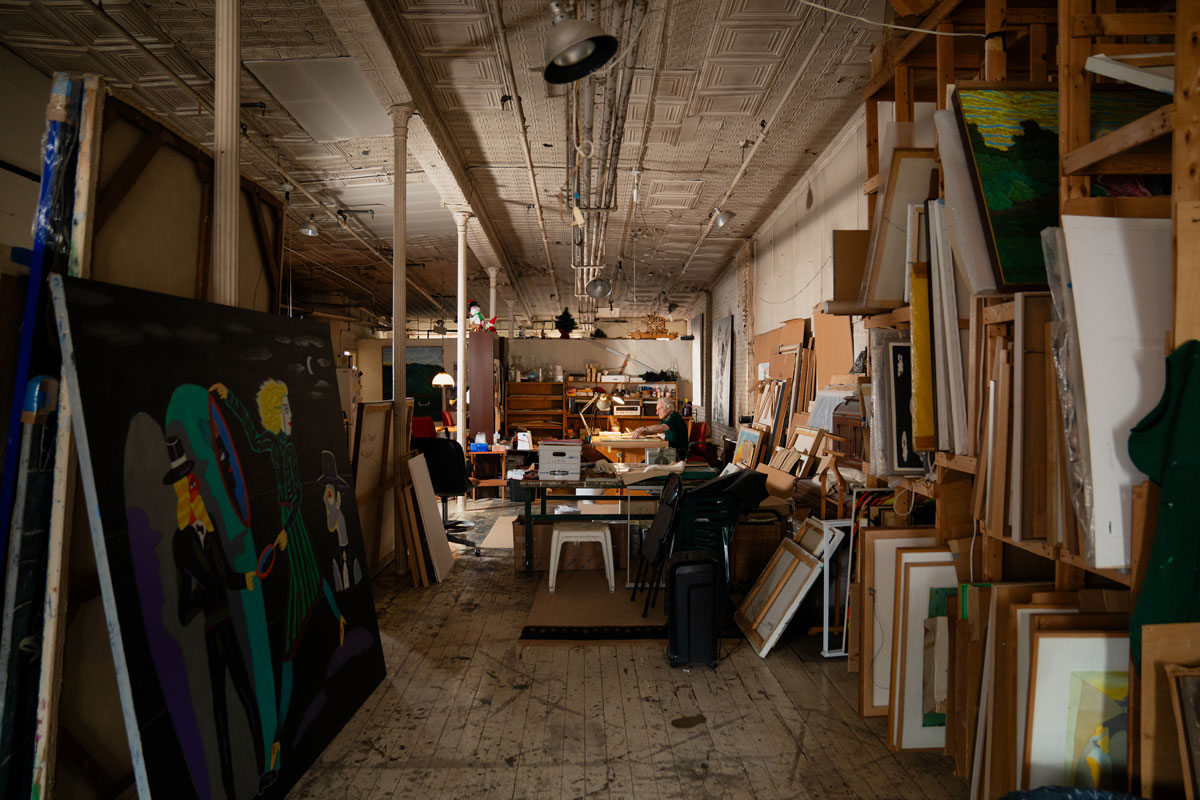“I’ve been lucky enough to hear stories from people all over the world who lived in a loft in their twenties and were delighted to see that artists are still in their lofts today. Across all generations I’ve heard the same sentiment – I wish this was still possible today.”
Joshua Charow is a kindred spirit of SoHo Memory Project. Like SMP, Charow’s new book Loft Law: The Last of New York City’s Original Artist Lofts, published by Damiani Books, tells the stories of artists and their lofts, primarily through 100+ photographs, but also through written narrative and architectural drawings and blueprints. An accompanying series of short films enhance the storytelling. And if any of those entry points doesn’t hook you, there is a gallery show of Charow’s images alongside the work of 11 artists featured in this project on view at the Westwood Gallery curated by James Cavello, though July 13. Such incredibly cool and important work, a must-have-see-hear-visit if there ever was one.
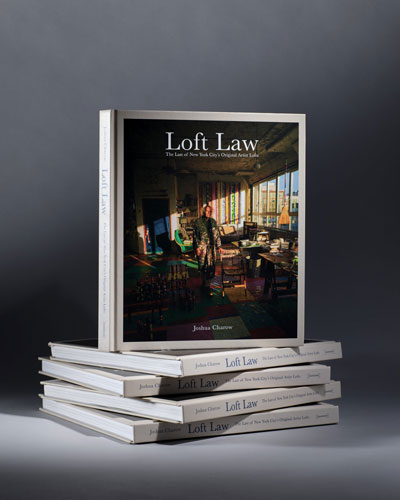
Loft Law is already in its second printing. The gallery show has been extended into July. “For years I created this project in private thinking it was the most interesting subject matter in the world,” Charow says about the reaction to his book. “For this reason I wasn’t surprised that others agreed, but I could have never expected the scale of how many people connected with the story, especially outside of the United States.”
Charow reflects further on the overwhelmingly positive response to his work:
I see the large response differently based on the younger and older generations. To younger generations, it indicates that the current reality of New York has shifted so far away from the original artist loft culture, that this way of life has gained a mythical status. Newcomers might have never been in a loft before and have always wondered what’s on the inside of these gorgeous old buildings. To see the spaces and more importantly, hear the incredible stories from the artists breaks that misconception that loft living doesn’t exist anymore. It’s actually still around and thriving for those who managed to hold on to their space. To the older generations, this story represents their youth and lived experience in New York or in other cities across the world where the same phenomenon happened.
Charow’s words echo the narrative thread running through so many of the SoHo stories collected on this site over the past 10+ years. There is a place where the myth and the lived experience of artists’ SoHo overlap, and it is here that we find something worth holding onto as we usher in its future.
“I constantly think about how my own life has been enriched by growing relationships with these artists and how important it is to have them continue to be a part of the cultural fabric of our city,” Charow says. “Without them, New York wouldn’t be the same.”
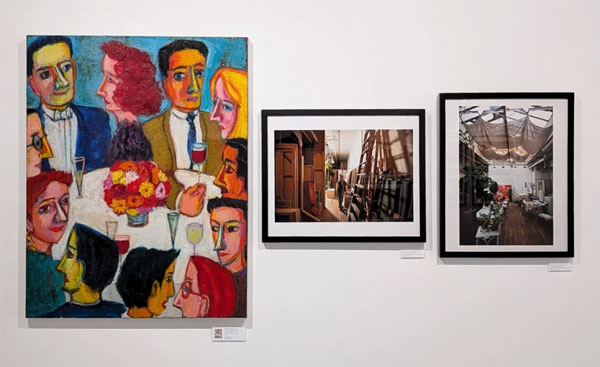
Every aspect of Charow’s project is interesting, from how it came about, to how he executed it, to the groundswell of interest and support that continues to grow now that it’s complete. Of the 32 artists included in the book, five are featured here whose lofts are in or around SoHo, but all of the artists and their lofts are uniquely compelling. I will let Charow’s photographs, video, and writing about his subjects speak for themselves below. I have nothing to add but my appreciation and admiration.
Scroll down for book and exhibition details.
I Made a Photo Book About NYC’s Original Artist Lofts
Joshua Charow spent the past two years creating his first photography book titled ‘Loft Law. The Last of New York City’s Original Artist Lofts’ about artists living under the protection of the Loft Law. The law, enacted in 1982 (Article 7-C of the Multiple Dwelling Law), granted protection and rent stabilization to thousands of artists who were living illegally in commercial and manufacturing zoned lofts in neighborhoods like Soho, Tribeca, and the Bowery after the manufacturing industry predominantly left Manhattan.
Two years ago, he found a map of the remaining protected buildings, rang hundreds of doorbells, and photographed and interviewed over 75 artists who are still living in these incredible lofts to this day. The photographs explore some of the most unique, beautiful, and hidden artist studios across New York City. The book includes writing and personal stories from the incredible group of artists featured in the book. (source)
Some of the Artists Featured in the Loft Law Project
Photographs and text by Joshua Charow
Kimiko Fujimura
Occupancy: Chinatown, 1979
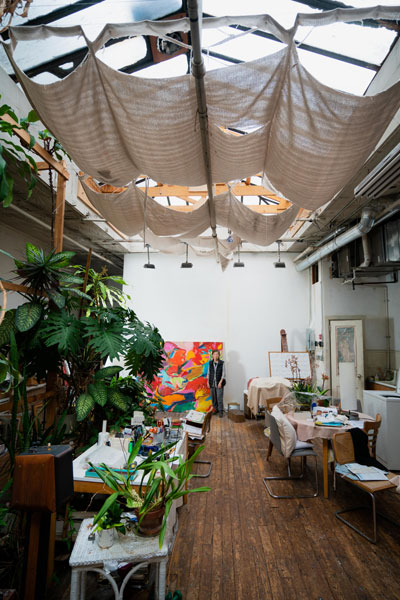
Above [Kimiko] Fujimori’s painting studio is a 30-foot skylight that stretches the length of the room. She has draped cloth across the skylight to reduce some of the heat that comes in when the sun is directly above. It’s hard to believe this oasis sits quietly above one of the busiest streets in New York City.
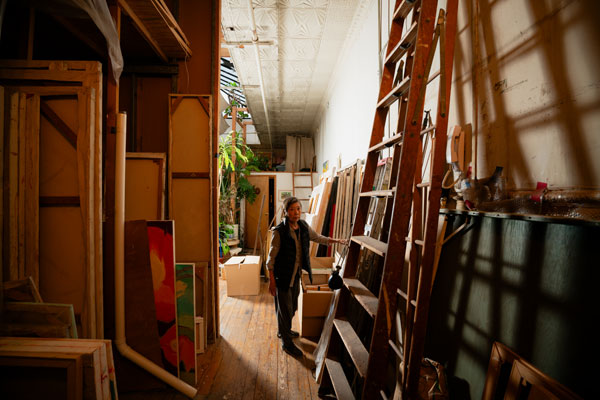
While there are many romantic elements of this history, it’s important to remember the flipside. Many of these artist-inhabited buildings had no certificate of occupancy and had extremely unsafe living conditions compared to modern standards of today. The gas, heating, and wiring were made by artists or second dash rate contractors. Kimiko Fujimura is a painter who moved from Tokyo to New York City more than 50 years ago to pursue her painterly passions. She lived in a loft in Soho where a fire broke out, destroying more than 100 of her paintings, and burning the entire building to the ground. This was a common story among this community of artists. Before the law, an artist-in-residence law allowed artists to live in 200 designated commercial buildings. The buildings were required to plaster a sign that read “AIR “on the front door, so if there was a fire, the firefighters knew people were living inside the building and needed to be rescued. Today, there are still a few buildings that display the “AIR “sign, a remnant from a far away reality. After the fire, Fujimura had to start her artistic life over. She migrated below Canal Street, a proclaimed desert at the time, and moved into the top floor of a former bow and ribbon factory.
Carmen Cicero
Occupancy: The Bowery, 1971
Alex Locadia
Occupancy: SoHo, 1987
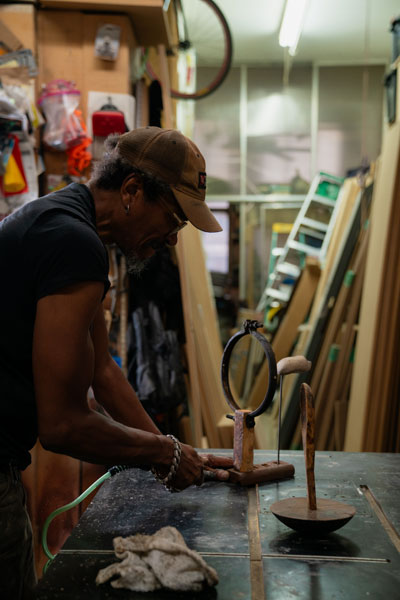
Inside a mysterious looking building on Canal Street, above dozens of merchants selling fake luxury bags on the street, is the home and studio of Alex Locadia. Locadia is an artist and furniture designer who moved into the building in 1987. Locadia grew up in Brooklyn and learned to work with his hands while working in an auto body shop as a kid.
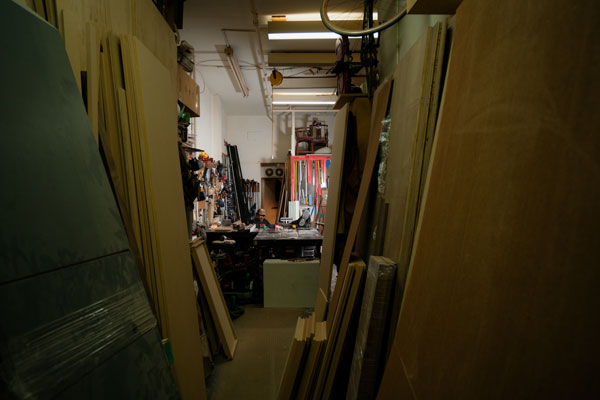
I ask the Locadia about his inspiration for creating artwork:
When I started doing a lot of cultural work, the thing I noticed, especially in this country with people of color, is that if you came here as an immigrant, you brought your culture with you. You brought your artistry and your craft. It was very difficult for people of color back in the day. If you don’t respect the person, how are you going to respect their work? How are you going to hang a painting or sculpture in your home made by a person of color that you’re not feeling? That’s always been a thing for me. So, when I started doing this work, I wondered what if black people had come to this country through Ellis Island? What would that design look like? What would the buildings look like? That sort of created a spark in me. One of the biggest things for me was that kind of representation through an object. No one has to know who did it, but it seeps in. You can’t push it down somebody’s throat or whatever the case is. That was what really got me into doing my work. A real reason, not just trying to make something pretty or whatever — but trying to school people on my thoughts of how we can have a better world, a better place, and more respect for each other.
Claire Fergusson
Occupancy: Tribeca, 1974
Ellen Christine
Occupancy: Hudson Square, 1985
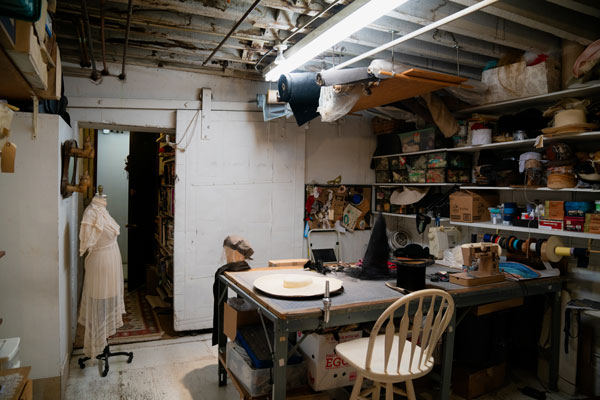
I walk up four flights of a wooden spiral staircase and see a hand-painted sign that reads “Ellen Christine Millinery.” I pull back an industrial sliding factory door and enter a space filled with hundreds of intricate hats. Ellen Christine is a milliner who has lived in the building since she was in graduate school. She was hired as a costume consultant on a book in 1984. The author of the book lived on the seventh floor of the building and told Christine that her downstairs neighbor was moving to New Jersey. Christine spoke to neighbor and the rest is history.
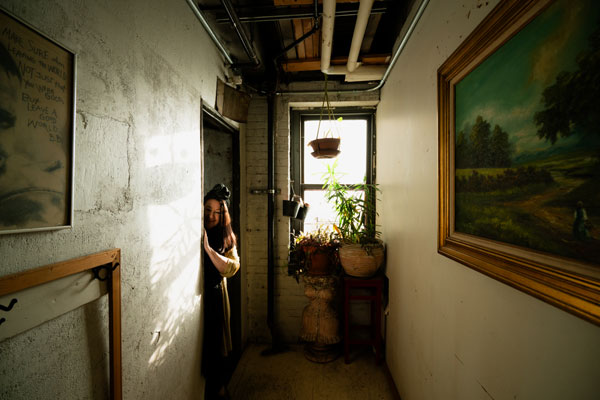
Christine shows me her studio, where she creates new hats and restores old ones. Her wall of materials and fabrics are reminiscent of how I can only imagine many of these industrial lofts were originally used.
The book:
Loft Law: The Last of New York City’s Original Artist Lofts
Joshua Charow
Published by Damiani Books.
Hardcover, 192 Pages, 108 Photographs, 9.64” x 11.22”
$55.00
Order HERE
Featured Artists: Ken Jacobs, Flo Jacobs, Loretta Dunkelman, Katherine Liberovskaya, Phill Niblock, Gerald Marks, Martine Mallary, Michael Sullivan, Carmen Cicero, Joseph Marioni, Carolyn Oberst, Jeff Way, Chuck DeLaney, Joe Haske, Kimiko Fujimura, Steve Silver, Noah Jemison, Sumayyah Samaha, Bob Petrucci, Claire Fergusson, Gilda Pervin, Curtis Mitchell, Ellen Christine, Marsha Pels, Betsy Kaufman, Jennifer Charles, JG Thirlwell, Alex Locadia, Winkel, Anne Mason remembering artist Frank Mason.
The exhibition:
Loft Law: Photographs By Joshua Charow
Carmen Cicero, Loretta Dunkelman, Betsy Kaufman, Kimiko Fujimura, Joseph Marioni, Carolyn Oberst, Marsha Pels, Gilda Pervin, Steve Silver, Mike Sullivan, Jeff Way
Westwood Gallery
May 16- July 13, 2024
262 Bowery New York, NY 10012
westwoodgallery.com
Joshua Charow is a documentary filmmaker and photographer based in NYC. At 15, Joshua would escape his suburban New Jersey town into NYC to climb skyscrapers and walk the subway tunnels to photograph beautiful, hidden locations. These experiences informed his style of shooting, unafraid of jumping into the unknown with a camera in hand.
Joshua has shot notable documentaries such as The Pool Cleaner for TIME Magazine and Our Town: The Young Asian Americans Fighting for the Future of Manhattan’s Chinatown for the New York Times.
Charow created and directs an online documentary series titled LimeLight, which explores the unique lives of New Yorkers. Over the past year, the series has amassed a following of 150,000 people and garnered over 40 million views.

